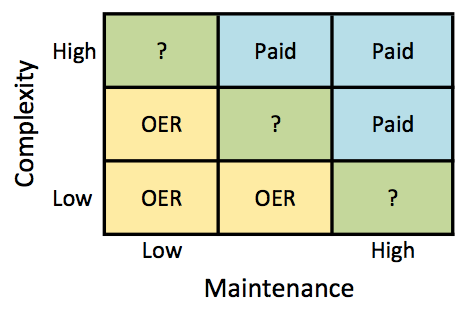Open Educational Resources (OER) are here to stay. Publishing, despite the rumors, is not dead. The real question is not “if” but “how” these two options will co-exist in the instructional materials market.
A starting point is sorting out where each type of resource makes the most sense. For me the two most important criteria are the degree of complexity in crafting the materials and the ongoing requirements for maintenance. How these two criteria map against content looks something like this:
 The Education Business Blog
The Education Business Blog





 Education publishers have taken a lot of fire in the last few years – many believe that we are too big, too powerful, and that things would be better if teachers just wrote their own materials or used free stuff.
Education publishers have taken a lot of fire in the last few years – many believe that we are too big, too powerful, and that things would be better if teachers just wrote their own materials or used free stuff.
 Quick – what percentage of your iTunes library is produced by amateurs? For that matter how many books on your eReader of choice are self-published works?
Quick – what percentage of your iTunes library is produced by amateurs? For that matter how many books on your eReader of choice are self-published works?